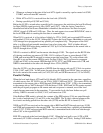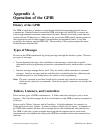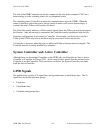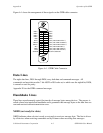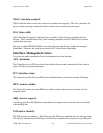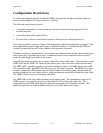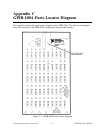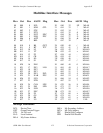Appendix A Operation of the GPIB
© National Instruments Corporation A-7 GPIB-100A User Manual
Configuration Restrictions
To achieve the high data transfer rate that the GPIB is designed for, the physical distance between
devices and the number of devices on the bus is limited.
The following restrictions are typical:
• A maximum separation of 4 m between any two devices and an average separation of 2 m
over the entire bus.
• A maximum total cable length of 20 m.
• No more than 15 devices connected to each bus, with at least two-thirds powered-on.
It is usually possible to connect a cluster of lab instruments without exceeding these restrictions. But
many applications require longer cable spans or additional loading. From the time the GPIB was
invented, the need has existed for bus extenders and expanders (repeaters).
Extenders connect two separate buses via a transmission medium and the distance between the buses
can be quite long. Expanders allow up to 14 additional devices to be connected to the bus and 20
meters of cable length to be added to the system.
National Instruments provides two extenders which allow longer cable spans. These products are the
GPIB-100A and the GPIB-110. Both must be used in pairs, one at each end of the extension cable.
The GPIB-100A, a parallel extender, relays the instantaneous status of all GPIB signals over an RS-
422-compatible cable. The GPIB-100A allows up to a 300-meter extension. The GPIB-110, a serial
extender, samples the GPIB signals, encodes the information into small packets, and transmits the
packets on either a low-cost coaxial cable, or a high performance electrically isolated fiber-optic cable.
The GPIB-110 allows up to a 2-kilometer extension.
The GPIB-100A is the only parallel extender on the market today. The instantaneous status of all
GPIB signals on one side are relayed over individual RS-422 circuits to the other side. This
approach makes the GPIB-100A the fastest and most transparent of all extenders available. The
parallel design however, requires bulkier and more costly cable than serial designs.



